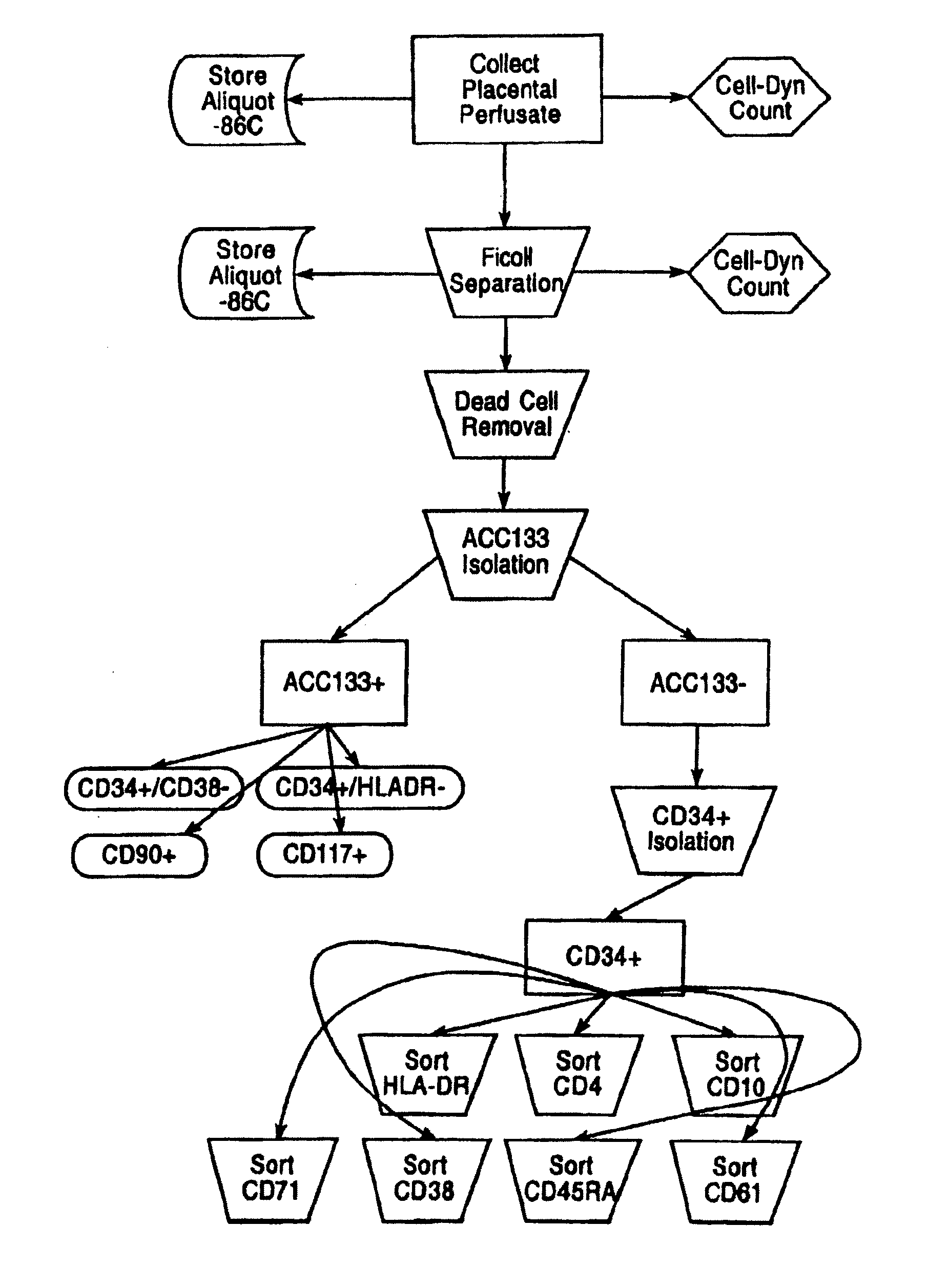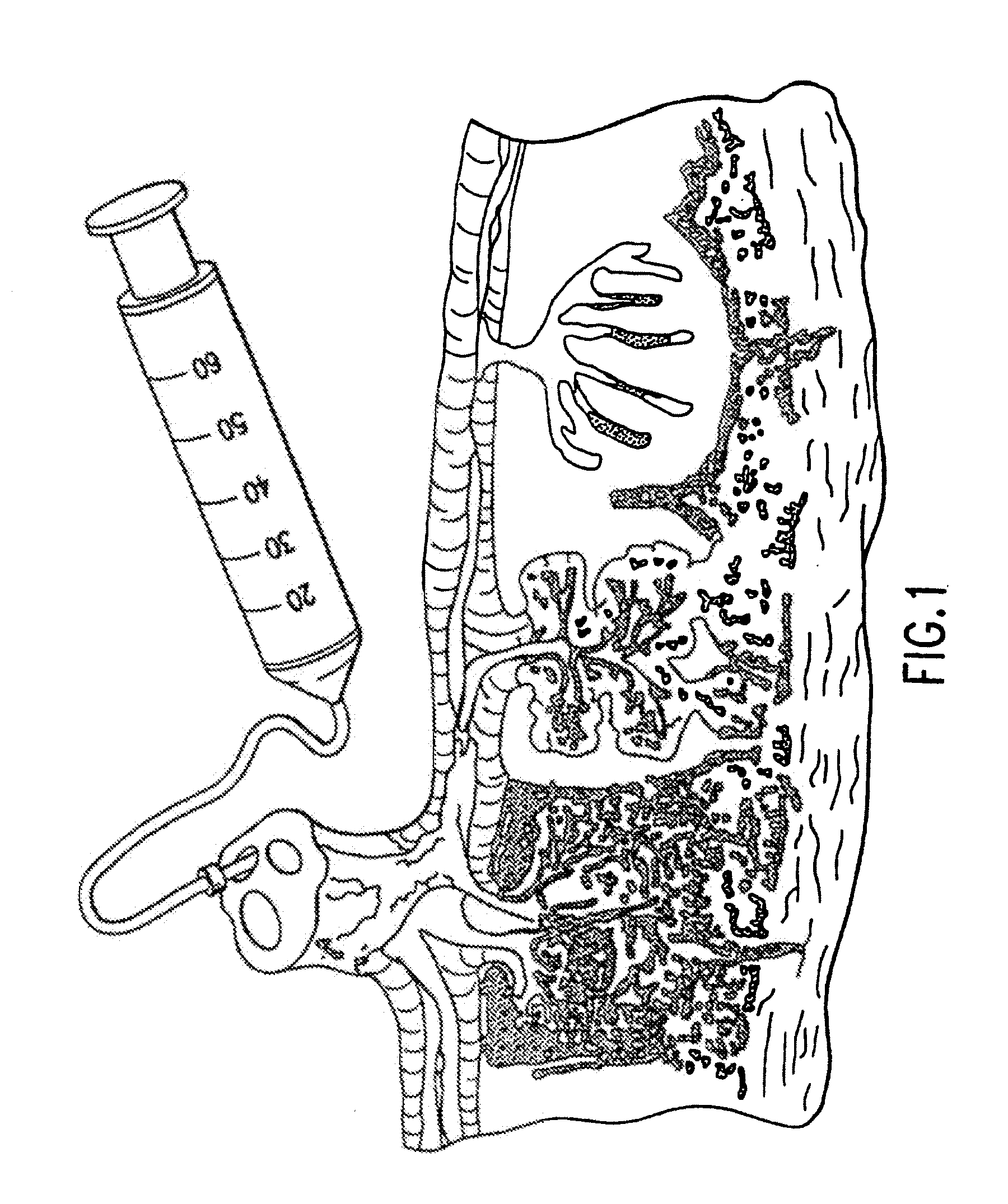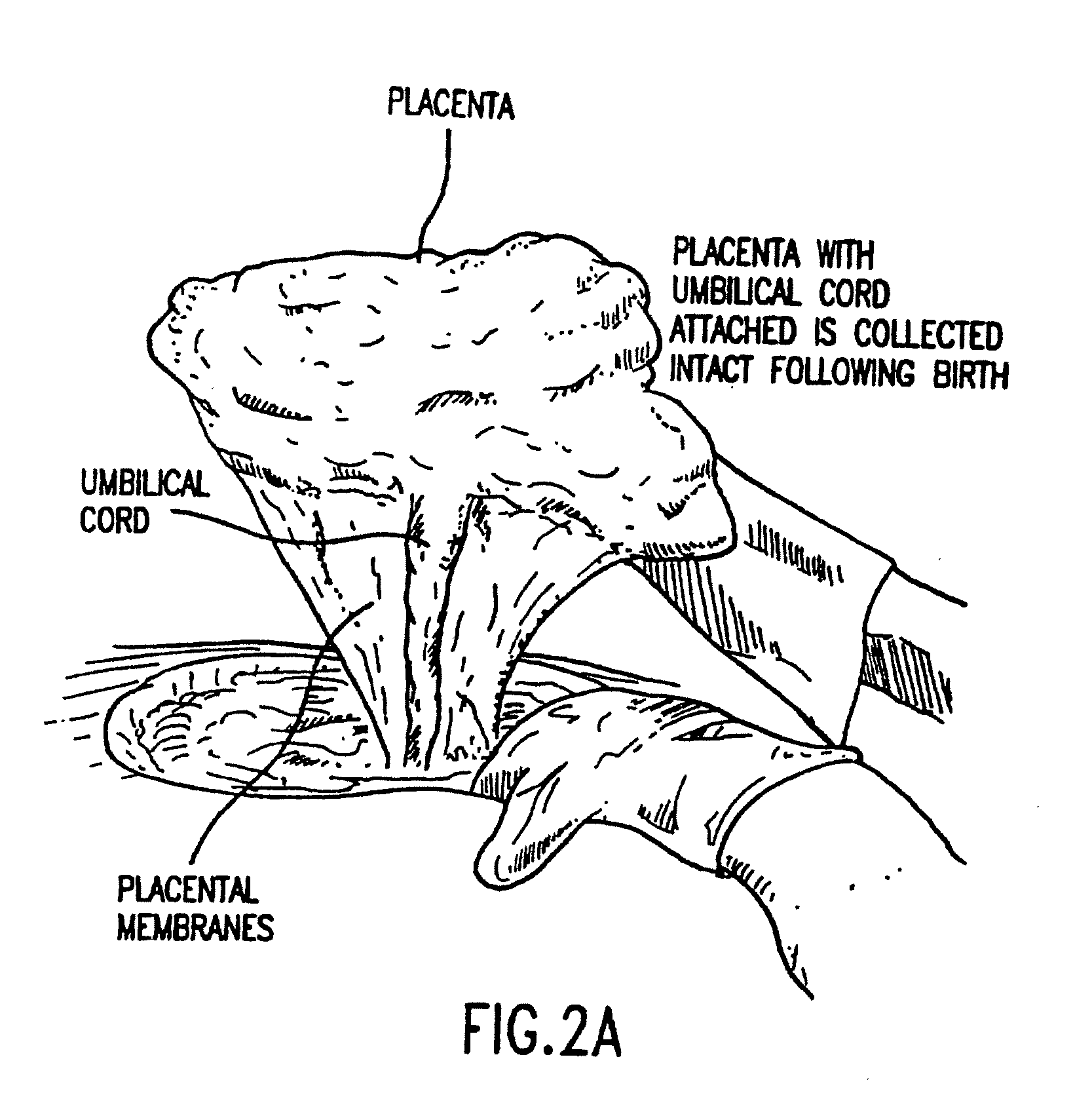Tissue matrices comprising placental stem cells
a placental stem cell and tissue matrice technology, applied in the field of tissue engineering, can solve the problems of unperfected, unproven, and unsuitable allogeneic organ transplantation, and achieve optimal steady state and promote differentiation and proliferation
- Summary
- Abstract
- Description
- Claims
- Application Information
AI Technical Summary
Benefits of technology
Problems solved by technology
Method used
Image
Examples
example 1
Analysis of Cell Types Recovered from Perfusate of Drained Placenta
[0145]This example describes the analysis of the cell types recovered from the effluent perfusate of a placenta cultured according to the methods of the invention.
[0146]Twenty ml of phosphate buffered saline solution (PBS) was added to the perfusion liquid and a 10 ml portion was collected and centrifuged for 25 minutes at 3000 rpm (revolutions per minute). The effluent was divided into four tubes and placed in an ice bath. 2.5 ml of a 1% fetal calf serum (FCS) solution in PBS was added and the tubes were centrifuged (140 minutes×10 g (acceleration due to gravity)). The pellet was resuspended in 5 ml of 1% FCS and two tubes were combined. The total mononucleocytes were calculated by adding the total lymphocytes and the total monocytes, and then multiplying the result by the total cell suspension volume.
[0147]The following table discloses the types of cells obtained by perfusion of a cultured placenta according to the...
example 2
Analysis of Cells Obtained by Perfusion and Incubation of Placenta
[0148]The following example describes an analysis of cells obtained by perfusion and incubation of placenta according to the methods of the invention.
[0149]Materials and Methods
[0150]Placenta donors were recruited from expectant mothers that enrolled in private umbilical cord blood banking programs and provided informed consent permitting the use of the exsanguinated placenta following recovery of cord blood for research purposes. All donor data is confidential. These donors also permitted use of blinded data generated from the normal processing of their umbilical cord blood specimens for cryopreservation. This allowed comparison between the composition of the collected cord blood and the effluent perfusate recovered using the experimental method described below.
[0151]Following exsanguination of cord blood from the umbilical cord and placenta, according to the methods described hereinabove, the placenta was placed in ...
PUM
 Login to View More
Login to View More Abstract
Description
Claims
Application Information
 Login to View More
Login to View More - R&D
- Intellectual Property
- Life Sciences
- Materials
- Tech Scout
- Unparalleled Data Quality
- Higher Quality Content
- 60% Fewer Hallucinations
Browse by: Latest US Patents, China's latest patents, Technical Efficacy Thesaurus, Application Domain, Technology Topic, Popular Technical Reports.
© 2025 PatSnap. All rights reserved.Legal|Privacy policy|Modern Slavery Act Transparency Statement|Sitemap|About US| Contact US: help@patsnap.com



